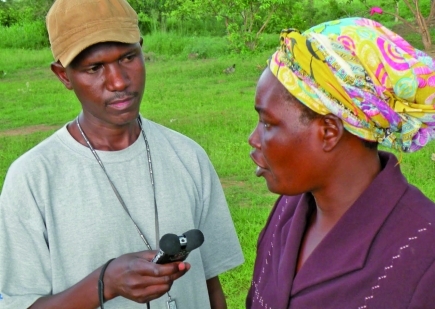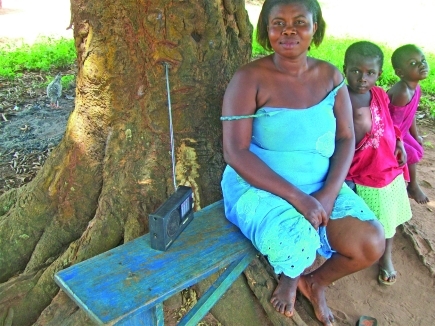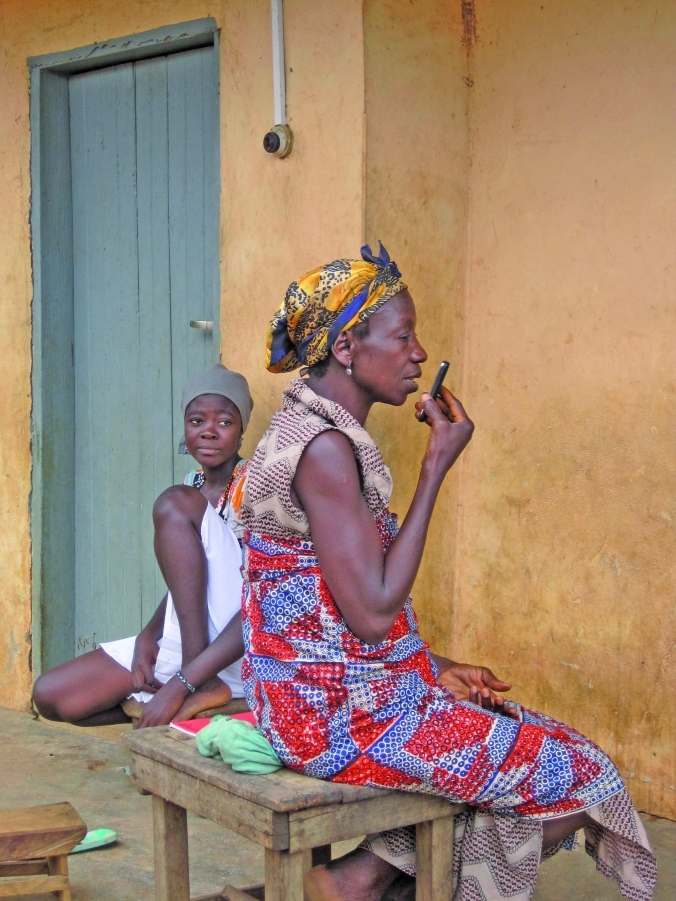Abstract
Food security is back in the headlines along with some hard-to-answer questions about how to achieve Millennium Development Goal 1. One of the solutions can be found in technology adapted for use on small farms in Africa. Gary Humphreys reports.
“The reality is that the proportion of hungry people in the world has only decreased by half a percent from 14% in 2000 to 13.5% today.”
Chris Leather
“We are going to need 70% more production by 2050 just to keep up with population growth and changing eating habits.”
David Dawe
When Winnie Asege’s crop was hit by cassava brown streak disease a few years ago she was faced with two problems. “She had very little to eat and nothing to sell,” says Emily Arayo, Uganda national coordinator of the African Radio Research Initiative, a project run by Canadian nongovernmental organization Farm Radio International. This is food security, or rather food insecurity, at its most basic: a woman standing in a field looking at rotten tubers and wondering how she and her children are going to survive.
The impact is global too. In recent years rising food prices have sparked civil unrest, fuelled inflation and led to economic measures by some countries. Global food prices hit new record highs in December 2010, according to the Food and Agriculture Organization (FAO). While the reasons for volatile food prices are as diverse as climate change, commodity speculation, changing dietary habits, increased population and global trade issues, at bottom food security is simple: it means everyone gets to eat.
This is the idea enshrined in the United Nations Millennium Development Goal 1, part of which seeks to cut by half the prevalence of underweight children aged less than five years and to halve the proportion of the global population struggling to survive below the minimum level of dietary energy consumption of about 1825 calories a day (FAO definition) between 1990 and 2015.
So, with four years to go, how close are we to achieving this goal? According to the United Nation’s Millennium Development Goals report, released in September 2010, not very: “Overall progress in reducing the prevalence of hunger has not been sufficient to reduce the number of undernourished people,” the report says. In other words there has been no change since the MDGs were announced in 2000.
A similarly discouraging picture is painted by the FAO, which also released a report in September 2010 stating that, while the number of hungry people worldwide had decreased from more than one billion in 2009 to 925 million people in 2010, this small decline was largely attributable to resumed economic growth and a fall in food prices since 2008. The preceding period saw a similar lack of progress. From 1990–2000, the proportion of undernourished people declined globally from 16% to 14%.
“The reality is that the proportion of hungry people in the world has only decreased by half a percent from 14% in 2000 to 13.5% today,” says Oxfam’s food and agriculture spokesperson Chris Leather, adding that any improvement that may have happened – and he has doubts about the numbers – has more to do with two years of good harvests rather than good policy. “Some countries may be doing better in terms of food security compared to 10 years ago,” Leather says, citing Brazil, Ghana, Malawi and Viet Nam as examples, “but overall the picture remains fairly bleak”. This is particularly true of the developing world, where, according to FAO economist David Dawe, 16% of the total population lives in hunger. “Finding ways to enable those people to feed themselves is one of the biggest challenges we face,” Dawe says.
This situation is unlikely to change unless international development partners and national governments live up to pledges made in the past few years, and notably in July 2009 in the Italian city of L’Aquila, where world leaders pledged US$ 20 billion in aid over three years to a food security initiative. But money alone will not bring about change either. “There needs to be new thinking,” says Dawe. “We are going to need 70% more production by 2050 just to keep up with population growth and changing eating habits. This increase cannot be achieved simply by increasing the land under cultivation. The best land is already being farmed while both water and fertilizer are becoming more scarce, and expensive.” Dawe believes that one of the ways production can be increased is by the judicious introduction of technology, but technology adapted for use on small farms. “If it is too complicated or takes years of learning, it’s not going to work,” he says.
It was just this kind of technology that helped Asege. All that was involved was a radio, or more precisely, a radio programme and some mobile phones. The programme in question was a weekly farm show that features interactive, entertaining, multi-format items on agriculture themes selected by area farmers. In Asege’s community, the programme highlighted cassava cultivation and the problems posed by cassava brown streak disease. “Farmers like Winnie can tune in and listen to people just like herself speaking in her language and talking about problems they are also experiencing,” explains Arayo.
While broadcast in the local language and rooted in the local agricultural context, the shows are generated by radio station staff with the support of Farm Radio International, which works with about 350 radio broadcasters in 39 African countries. “We are coming up to 1000 scripts,” says Farm Radio International Chief Executive Officer Kevin Perkins, who says that their programmes reach around 39 million farmers every week.
“One of the things that radio can do really well is to bring people together, but that is not all it does,” Perkins says, arguing that what makes radio particularly exciting right now in the developing world is the emergence of technologies that make it not only cheap but interactive. “The lowering of the cost of recording equipment, the availability of open-source editing software, and the introduction of cell phones has made it possible to connect people who are otherwise isolated in remote rural areas,” Perkins says, stressing the fact that people don’t just listen, they call in to share their views in talk radio segments.
Farmers talk to farmers about problems as diverse as animal enclosure, composting techniques, low-cost crop storage methods and the introduction of new crop varieties. Perkins says: “Radio becomes a platform for conversations and dialogue involving farmers, extension workers, policy-makers and researchers. It no longer has to be a one-way medium that lectures farmers – instead, they can participate in finding the solutions and share their knowledge with each other.”
Winnie Asege, chairperson of Dakabela Rural Woman Development Association, speaks to a journalist.
Courtesy of Farm Radio International
Farmer Grace Bediako listens to farm radio in the Brong Ahafo region in Ghana.
Courtesy of Farm Radio International
A farmer in Ghana speaks on her mobile phone. Mobiles have revolutionized the way farmers across Africa have interactively engaged with radio, traditionally a medium that was a one way flow of information.
Courtesy of Farm Radio International





